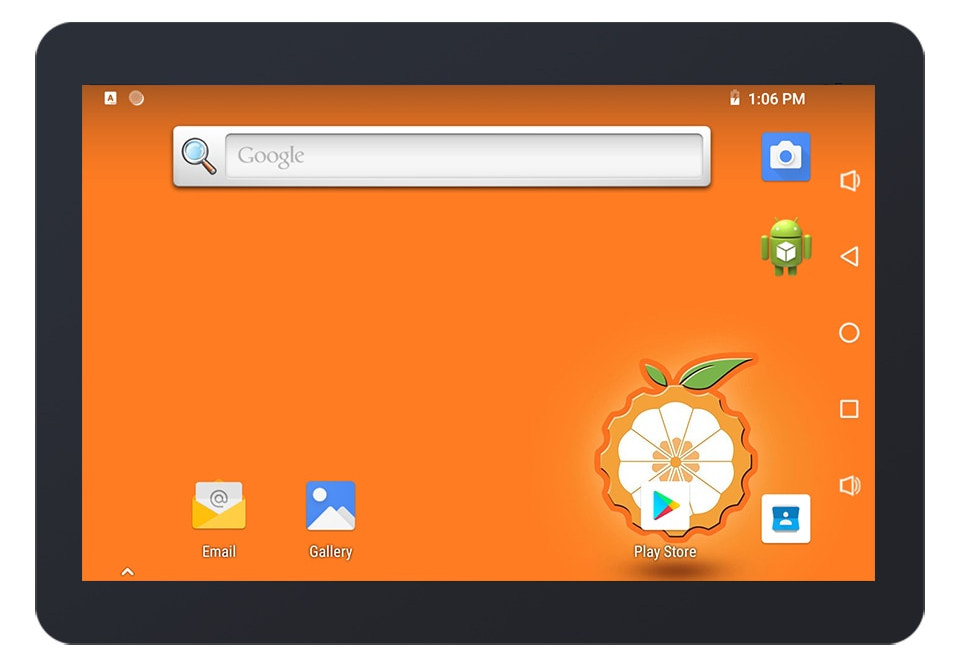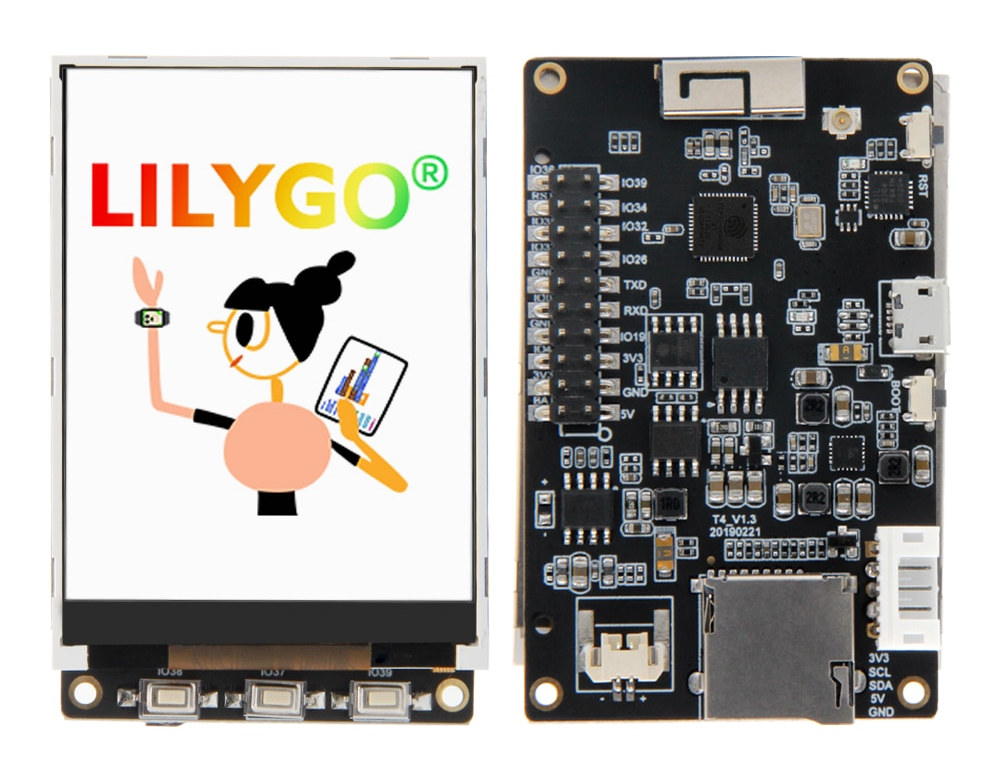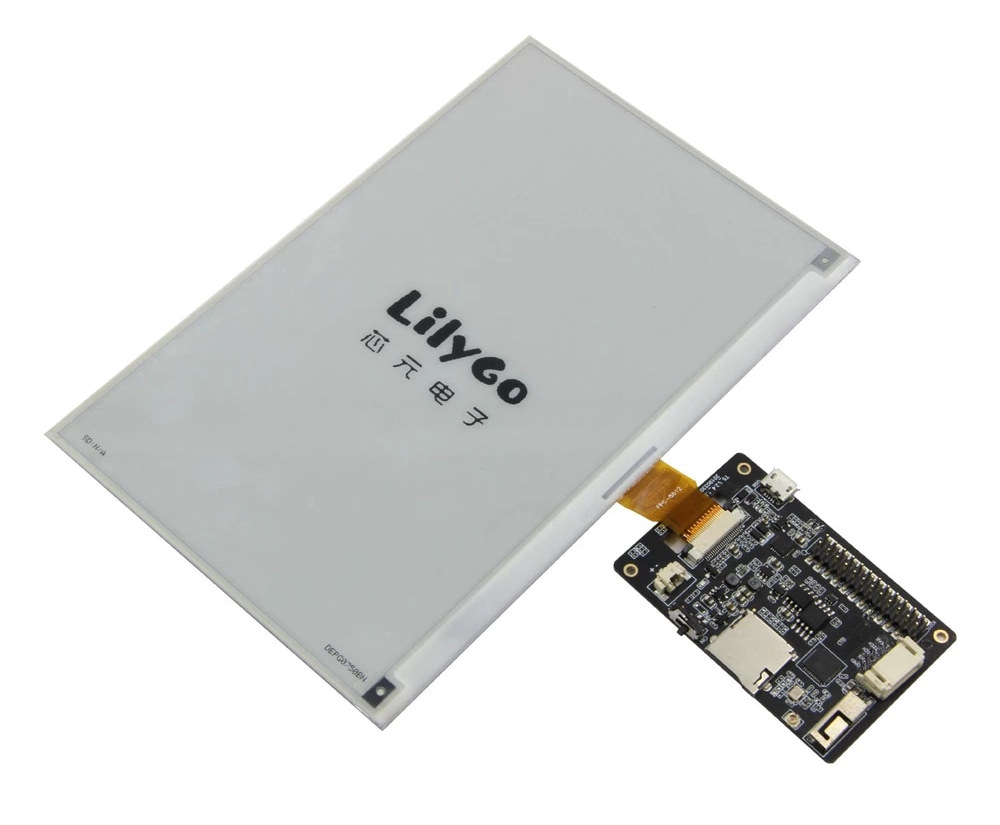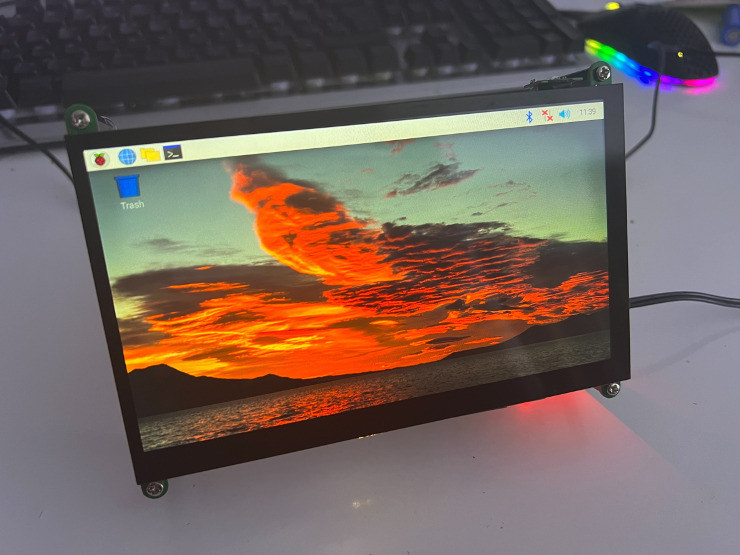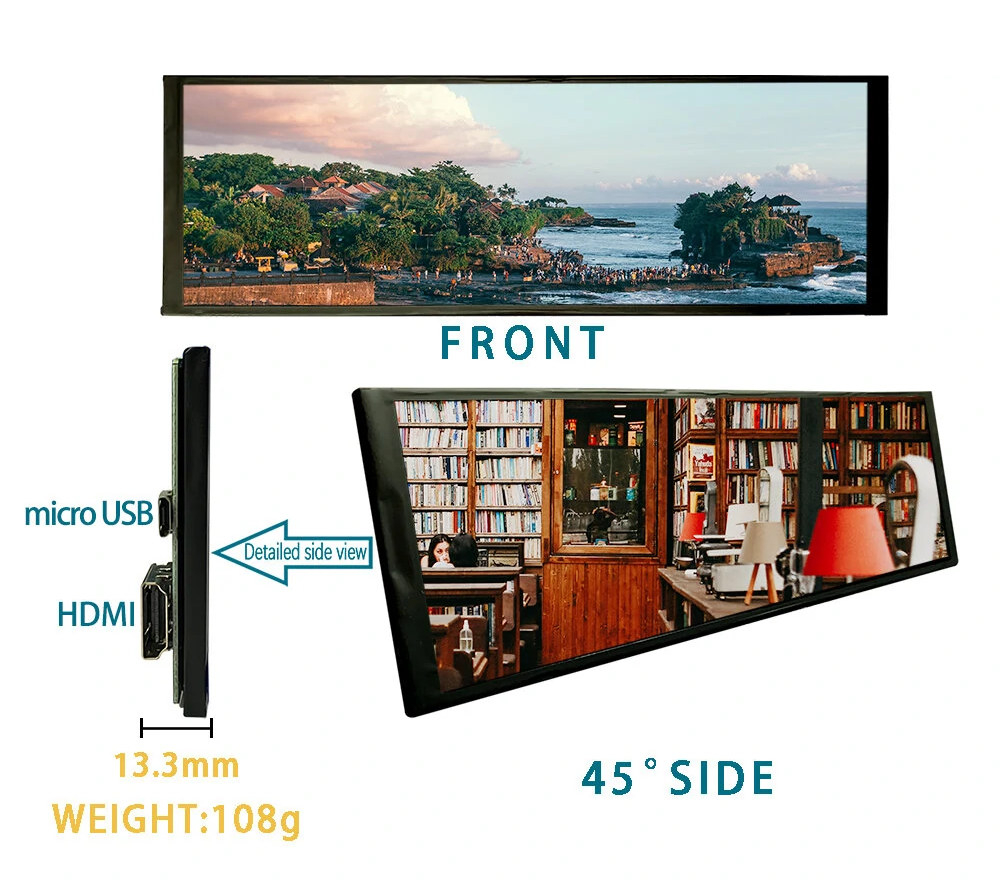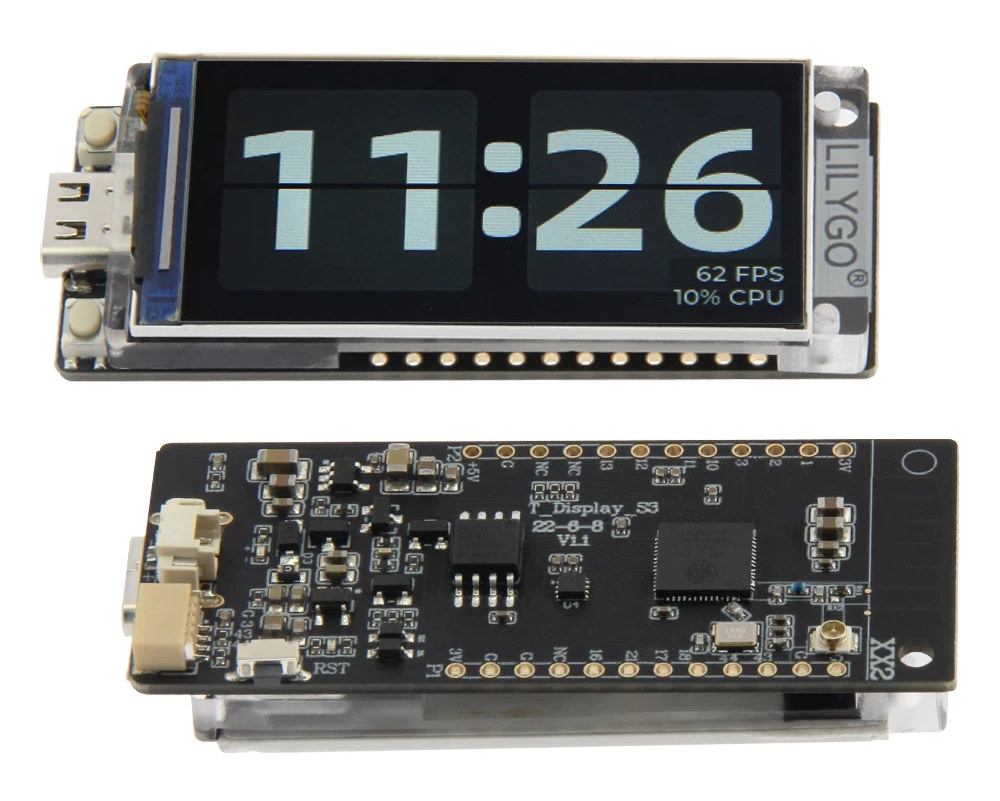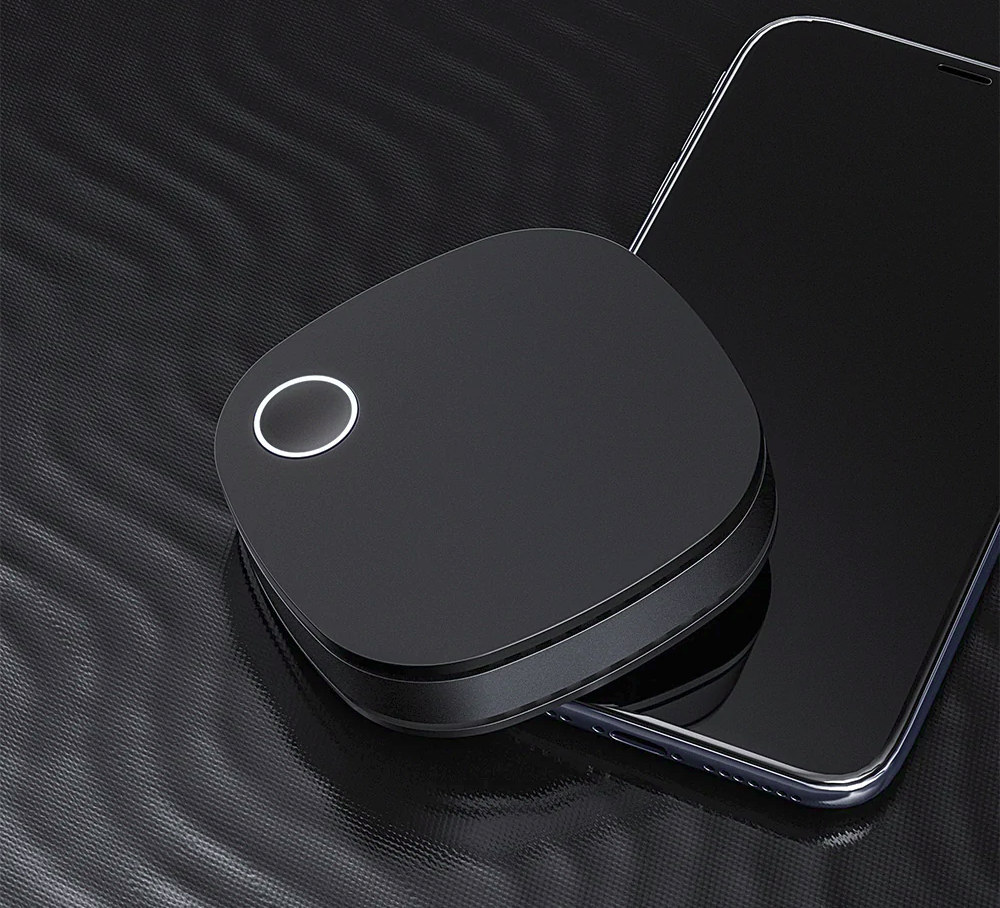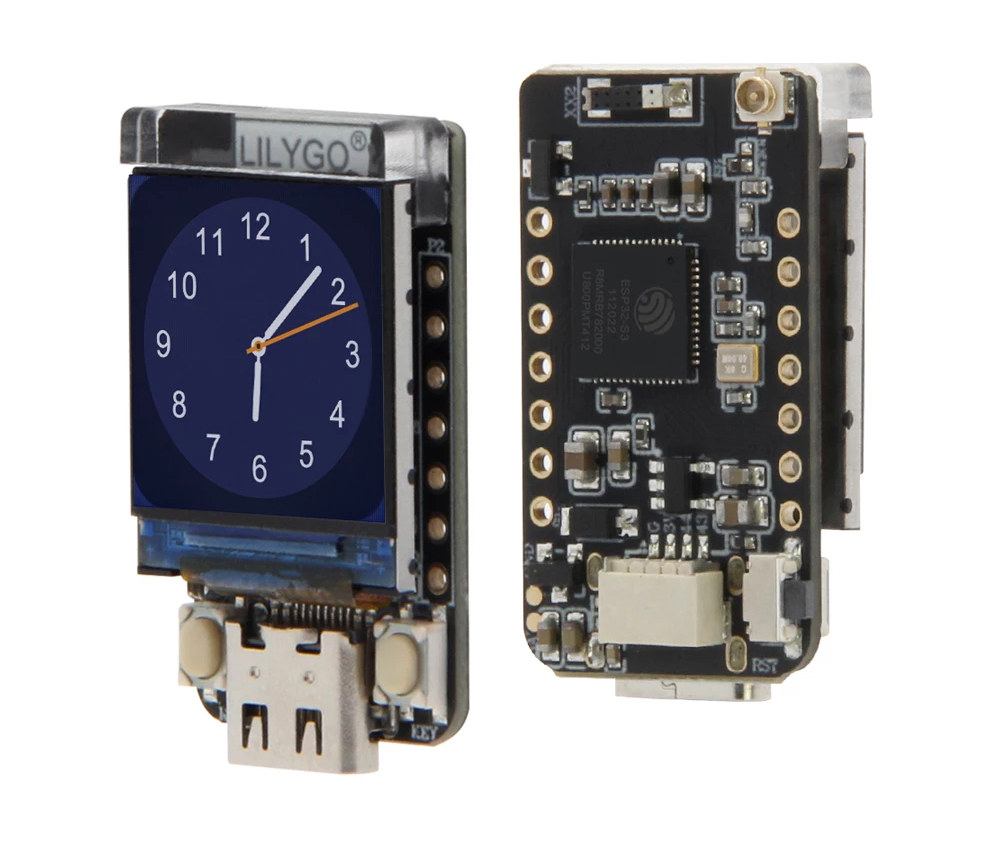Shenzhen Xunlong Software has released a 10.1-inch LCD touchscreen for the company’s Orange Pi 4 single board computer powered by a Rockchip RK3399 hexa-core Cortex-A72/A53 processor. The MIPI DSI display is based on Ilitek ILI9881c panel controller supported in mainline Linux, offers 1280×800 resolution, and besides working with the original Orange Pi 4, it’s also compatible with Orange Pi 4B (with AI accelerator) and the more recent Orange Pi 4 LTS SBC launched earlier this year. 10.1-inch LCD touchscreen specifications: Display Controller – Ilitek ILI9881C (See PDF datasheet) 10.1-inch panel size 1280×800 resolution @ up to 60Hz, with 16.7 million colors Luminance – 250 cd/m2 (or nit) Backlight – 27x white LEDs Brightness control with PWM 10-point multi touchscreen Host interface – MIPI DSI Dimensions Active area – 216.58 x 135.36 mm Outline dimensions – 228.6 x 143 x 2.7 mm Weight – TBD Temperature Range – Operating – 0 […]
TTGO T4 ESP32 board features 2.4-inch color display, IP5306 battery charging IC
LilyGO has launched yet another ESP32 board with an integrated color display. The TTGO T4 offers a 2.2-inch or 2.4-inch color display, LiPo battery support, but in contrast to many other boards from the company, features a battery charging circuitry based on Injonic IP5306 “fully-integrated power bank system-on-chip with 2.1A charger, 2.4A discharger”. The WiFi and Bluetooth IoT board is also equipped with 4MB flash, a MicroSD card socket, 8MB PSRAM, a 20-pin GPIO header and a 5-pin I2C connector for expansion, and a few buttons for programming and user control. TTGO T4 v1.3 specifications: Wireless MCU – Espressif Systems ESP32 dual-core Tensilica LX6 microcontroller @ up to 240 MHz with 520 KB SRAM, wireless connectivity RAM – 8MB SPRAM (ISSI PN18S32) Storage – 4MB SPI NOR flash, MicroSD card slot Connectivity (ESP32) 2.4 GHz 802.11 b/g/n Wi-Fi 4 Bluetooth 4.2 BR/EDR and Bluetooth LE 3D antenna and u.FL connector […]
$52 7.5-inch E-paper display connects to ESP32 boards
So far LILYGO’s ESP32 boards with an E-Paper display such as the TTGO T5 or Mini E-Paper Core featured smaller displays from 1.02-inch to 2.9-inch. But the company is now offering a larger 7.5-inch display that works with most of its T5 boards excluding the one used with a 4.7-inch display. The black and white e-paper display offers a resolution of 800 x 480 pixels, is Arduino programmable and backward compatible with earlier T5 E-paper solution, and should be one of the most cost-effective to way to make a wireless E-paper display. LilyGO 7.5-inch E-paper display specifications: Panel SKU – DKE DEPG0750_U790F3 (See PDF datasheet. note non-secure link so your browser may complain) Size – 7.5-inch diagonal Resolution – 800 x 480 pixels (124 DPI) Active area – 163.2 x 97.92mm Pixel pitch – 0.204 x 0.204 mm Host interface – SPI Dimensions – 170.2 x 111.2 x 1.2 mm […]
Review of SunFounder TS7-Pro 7-inch touchscreen display for Raspberry Pi 4
Unboxing SunFounder TS7-Pro touchscreen display SunFounder TS7-Pro is a 7-inch touchscreen display designed for Raspberry Pi 4 board and the company sent us one review sample for evaluation. SunFounder has a wide range of Raspberry Pi and Arduino accessories designed for makers, and the TS7-Pro 7 is their latest offering that’s optimized to work with Raspberry Pi 4 and Raspberry Pi 3. Adding a touchscreen display to a Raspberry Pi may be a bit messy with the display or other accessories such as cameras and/or 2.5-inch drive spread on the table, but the TS7-Pro display simplifies all that with a neater assembly. Let’s start the review with an unboxing The package is compact and the display is well-protected with polyethylene foam to reduce the risk of damage during transport. Accessories such as cables, screws and nuts, adapters, an acrylic enclosure, and a screwdriver are also included in the package. Here’s […]
7.9-inch ultrawide HDMI display works with Raspberry Pi SBC
If you are looking for an ultrawide display to show information on your PC or Raspberry Pi, there’s a 7.9-inch IPS display with 1280×400 resolution that may meet your requirements. The display is powered through a USB port and takes a video source from its HDMI 1.4 input port, so it should work with any hardware equipped with HDMI output and a USB port. LR79 display specifications: Display – 7.9-inch TFT-LCD IPS display with 1280×400 resolution @ 60Hz, no touch function 178° field of view 5:16 aspect ratio Response Time: 40ms(Typ.)(Tr+Tf) Contrast Ratio: 900:1 Brightness: 500cd/㎡ Color Gamut: 70% NTSC Display Colors: 16.7M Backlight: WLED (19.2V) Connector: 30-pin ZIF Display Input – HDMI 1.4 Power Supply – 5V via micro USB port Dimensions 205.8 x 67.6 x 13.3 mm Active Area – 190.08 x 59.40 mm Weight – 108 grams The display should work with any host with HDMI output, […]
T-Display-S3 board offers ESP32-S3 WiSoC, 1.9-inch color LCD, and LiPo battery support
LilyGO T-Display-S3 is an ESP32-S3 WiFi and Bluetooth LE IoT development board with a 1.9-inch color LCD and support for LiPo batteries that follows the company’s T-QT ESP32-S3 board with a tiny 0.85-inch display introduced earlier this month. The new board offers the same layout as the previous T-Display RP2040 or ES32 boards, but the 1.14-inch display has been replaced with a larger 1.9-inch display that covers most of the board, and thanks to the ESP32-S3 microcontroller, gains proper Bluetooth 5.0 support, as well as vector instructions for AI acceleration. T-Display-S3 specifications: Wireless MCU – Espressif Systems ESP32-S3R8 dual-core Tensilica LX7 @ up to 240 MHz with vector instructions for AI acceleration, 512KB RAM, 8MB PSRAM, wireless connectivity Storage – 16MB flash Connectivity via ESP32-S3 2.4 GHz 802.11 b/g/n Wi-Fi 4 with 40 MHz bandwidth support Bluetooth Low Energy (BLE) 5.0 connectivity with long-range support, up to 2Mbps data rate. […]
4K wireless display adapter supports 3840×2160 resolution @ 60 Hz, HDR (Sponsored)
ProScreenCast SC01 is a 4K wireless display adapter supporting 3840×2160 resolution at up to 60 Hz with High-Dynamic Range (HDR) support. The HDMI 2.0 adapter is compatible with Miracast, Airplay, and DLNA streaming standards, and can sustain the required bandwidth needed thanks to dual-band WiFi 5 connectivity. We started to see plenty of Miracast and DLNA capable wireless adapters about 8 years ago, but there were all limited to WiFi 4 and either 720p or 1080p resolutions, so the ProScreenCast SC01 wireless adapter offers a greatly improved video quality and user experience with faster WiFi, and 4K HDR support. SC01 specifications: Video Output – HDMI 2.0 up to 4Kp60 with HDR support Wireless – Dual-band WiFi 5 (802.11ac) Support standards – Airplay, Miracast, and DLNA Power Supply – 5V/1A or 2A via USB Type-C port Dimensions – 72 x 72 x 17 mm Weight – 50.7 grams Materials – ABS+PC […]
LILYGO T-QT V1.1 – A cute little board with ESP32-S3 and a 0.85-inch color display
LILYGO must be churning out at least one new “ESP32” board every month, but I don’t think they’ve ever made one with ESP32-S3. LILYGO T-QT V1.1 board changes that and combines the dual-core WiFi 4 and Bluetooth LE 5.0 AI microcontroller with a 0.85-inch color display. The board also happens to be rather small and cute with a 33 x 18 mm form factor, offers some I/O via headers and a 4-pin connector, and can be powered via its USB Type-C port or a battery, but lacks a charging circuit. LILYGO T-QT V1.1 specifications: Wireless MCU – Espressif Systems ESP32-S3 dual-core Tensilica LX7 @ up to 240 MHz with vector instructions for AI acceleration, 512KB RAM, wireless connectivity Storage – 8MB flash Connectivity via ESP32-S3 2.4 GHz 802.11 b/g/n Wi-Fi 4 with 40 MHz bandwidth support Bluetooth Low Energy (BLE) 5.0 connectivity with long-range support, up to 2Mbps data rate. […]


